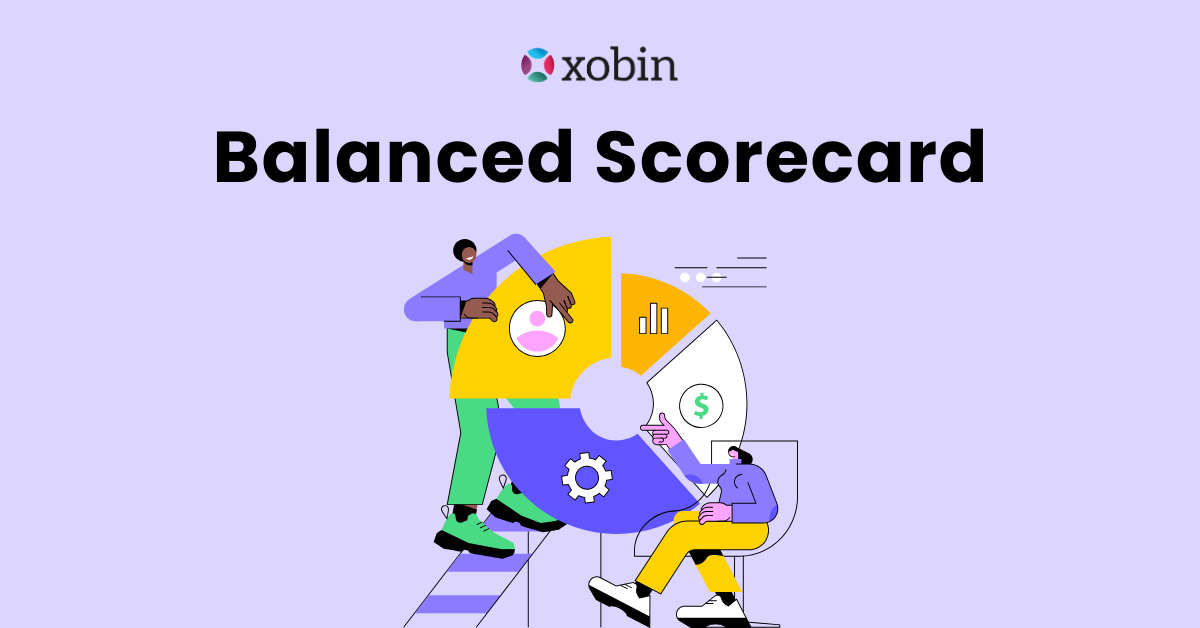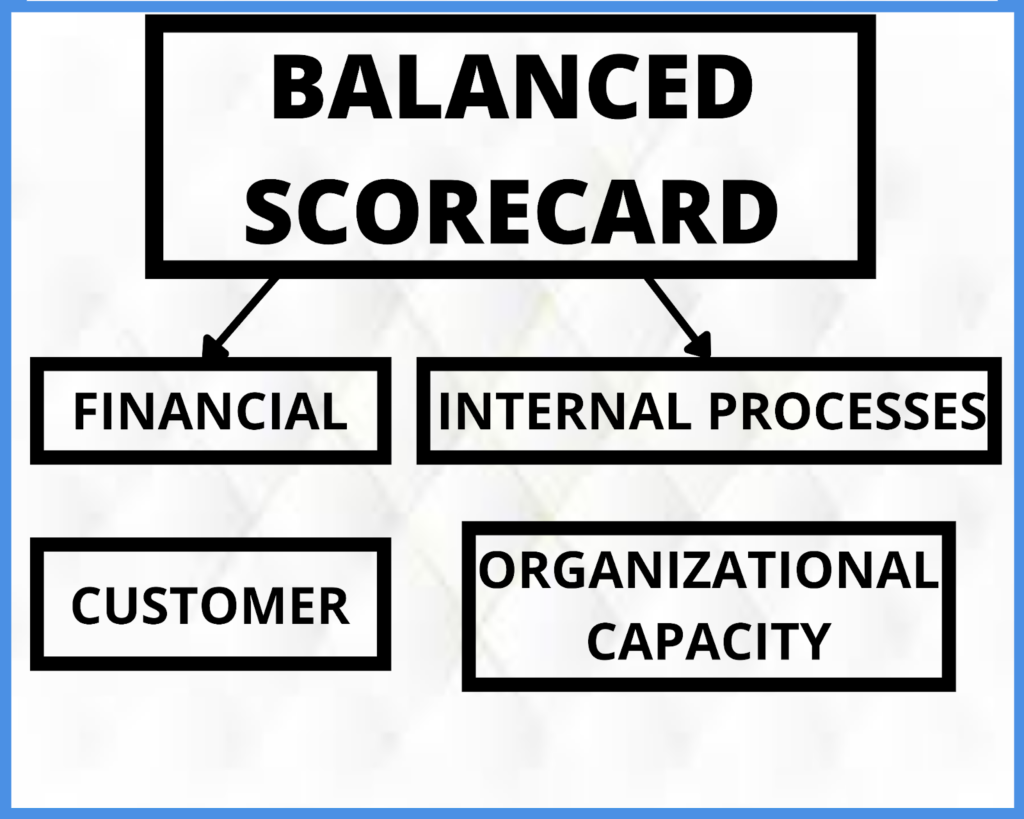XOBIPEDIA
HR Glossary

What is a Balanced Scorecard?
A balanced scorecard is a performance management tool, used to improve the internal functioning of a business. It is a management tool used by managers for tracking and managing a company’s strategy.
It enables you to describe your company’s strategy and measure your goals in quantitative terms. It provides a framework for describing the business strategy and helps in improving the overall performance of the company.
It helps in measuring your company’s performance and provides feedback in order to help you improve your results.
The key indicator of a balanced scorecard is to tell you whether you’re accomplishing your goals or not.

The Origin of Balanced Scorecard
Art Schneiderman is known as the designer of the balanced scorecard and designed it back in 1987.
Art Schneiderman was involved in a study in 1990 which was led by Dr. Robert Kaplan and Dr. David Norton.
Art shared his work on performance management and Dr. Kaplan and Dr. Norton ended up writing a paper on the same. The paper was published in 1992 and was such a massive success that it was even published as a boom in 1996.
Dr. Nortan and Dr. Kaplan were working on a study to solve the problem of existing performance measurement approaches becoming obsolete. They believed that relying on financial performance measures was stopping companies to create future economic value.
Discussions between Art and Dr. Nortona and Dr. Kaplan led to the formation of the balanced scorecard. The name shows the balance between financial and non-financial measures, short term and long term objectives.
Dr. Kaplan and Dr. Norton are considered as the developer of balanced scorecards based on the design of Art Schneiderman.
The performance management tool was created to help companies convert their strategies to a set of measures through which performance can be managed.
The Four Perspectives of a Balanced Scorecard
A balanced scorecard looks at organizational performance from various perspectives.

The four perspectives of a balanced scorecard are as follows-
Financial
This perspective focuses on earning a return on investments made. It involves managing the financial risks involved in the business. The goal can be achieved by satisfying all the stakeholders of the company such as shareholders, suppliers, customers.
Since shareholders are important stakeholders of the company, it is important to satisfy them.
Financial objectives are really easy to define, however, don’t provide any process as to how to achieve these goals.
Customer
This perspective focuses on the value provided to the customers of your business. It measures the level of customer satisfaction with your company’s products or services.
Customers are what make a business and need to be treated well. Customer satisfaction indicates the success of a business.
Companies need to see their performance from the customer’s viewpoint and understand their organizational functions better.
A balanced scorecard allows the company to compare the customer satisfaction of their company to their competitors.
Customer satisfaction can be improved through improving the customer experience, improving product or service quality.
Internal Processes
This perspective focuses on the internal functioning of the business. It determines how well a business is doing.
A balanced scorecard helps in determining whether your products or services conform to the standards of customers or not. It helps in running the business more efficiently.
An efficient internal process can improve performance in other areas of business as well.
Organizational Capacity
This perspective focuses on the performance of the staff in different departments. It measures the skills of people and how well they perform.
This includes technology as well as infrastructure.
It is one of the most important areas to improve by investing in training, development, etc.
How Does Balanced Scorecard Improve the Organization?
A balanced scorecard measures both financial as well as non-financial measures, thus giving a better idea about the functioning of a business.
A balanced scorecard helps in improving the organization in many ways such as-
Clearly Defined Goals
A balanced scorecard helps in defining the goals clearly and lays down the organizational strategy for the company.
It helps in determining the performance of your company and tells you where it needs more attention. This helps in improving the top-most priority areas, thus improving the overall efficiency.
Better Organizational Alignment
A balanced scorecard help in improving the organizational alignment. It helps in aligning the organizational goals to strategic objectives. All the departments of the company must work towards a common goal.
A balanced scorecard helps in strategizing all those units so that they work towards the common goal of the company.
Allows Performance Analysis
A balanced scorecard helps in determining the strengths and weaknesses of your company. It will help you in monitoring your employee’s performance.
You can do a SWOT analysis to find out your strengths and weaknesses. All of this eventually brings your company closer to achieving its common goal.
Improved Communication
A balanced scorecard improves the level of communication in the company. It helps the managers to communicate the common goals of the company to every department of the company. It helps different departments in better understanding the strategy for achieving the common goal of the organization.
Hope this blog helped you learn about balanced scorecard in detail. For more;

Recommended Content

Video Interviews can simplify your hiring
Don’t let a packed schedule be a hindrance in recruitment. Use structured interviews with the power of video to screen applicants. Understand the communication skills, motivation and job skills using video interviews.

Complete Guide to Pre-Employment Testing
Move over from pen-paper based tests and manually checked assignments to pre-employment assessments. Democratize your organization hiring by screening for skills before you interview.

How can Employers adapt to Remote Hiring
With most jobs going remote, your best applicants could be in Melbourne or Miami. From remote screening and virtual interviews to remote onboarding, Learn the best practices to get started.


